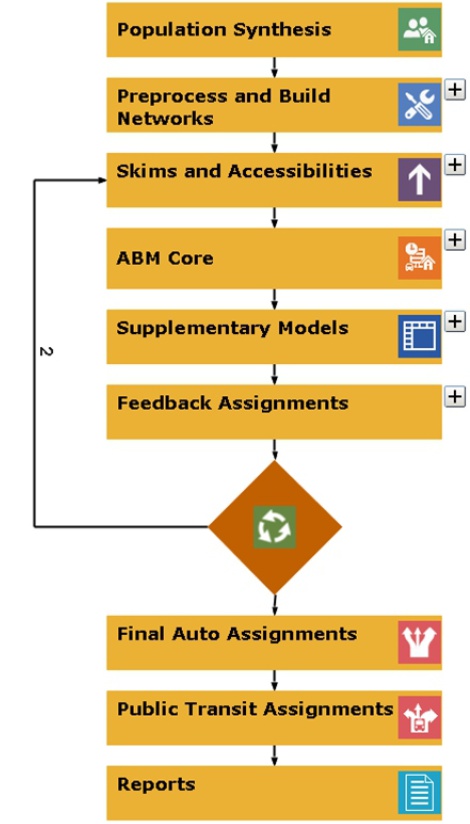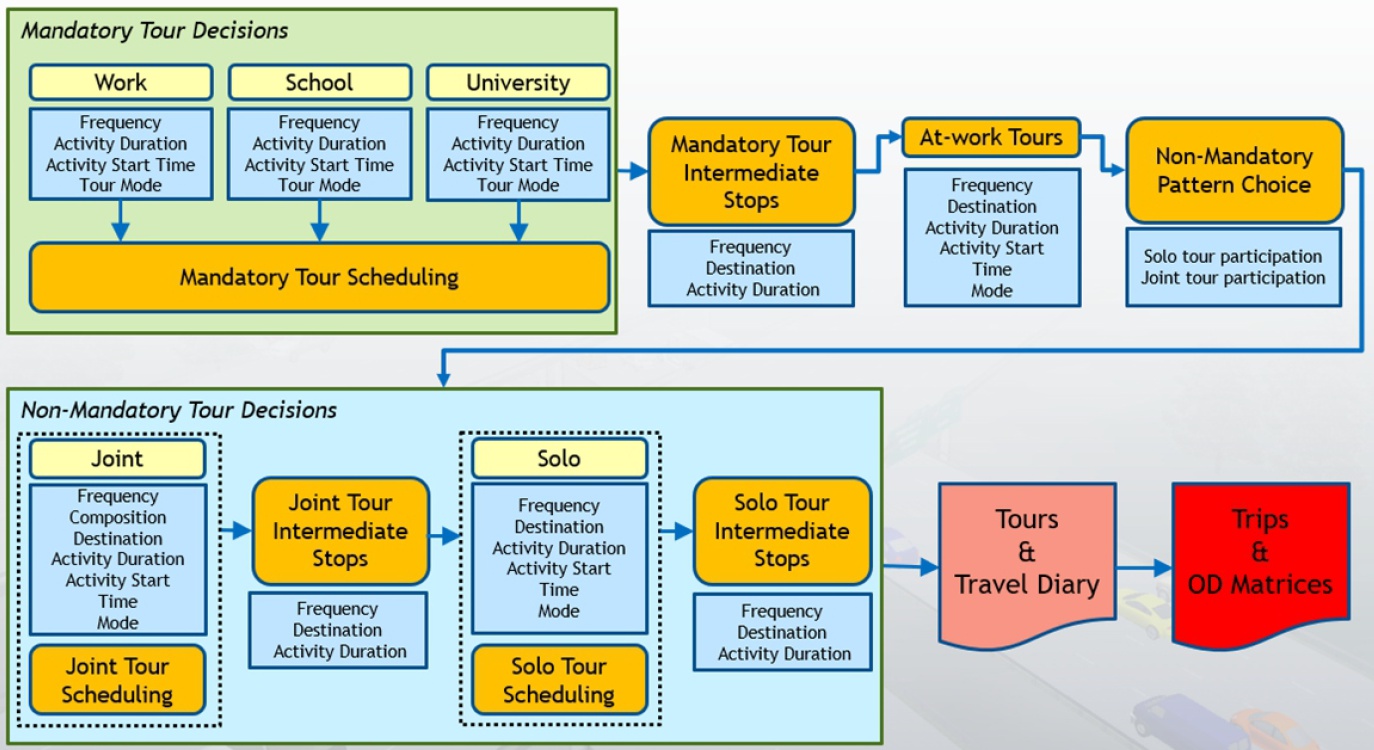Activity-Based Models (ABMs) accommodate a fine-grained analysis of a region's mobility patterns and scenarios. Based on a simulated enumeration of the region's population (persons and their households), ABMs have the potential to answer policy questions at the level of individual and household characteristics such as age, gender, income and auto sufficiency, thus providing a nuanced and high-fidelity approach to quantifying and assessing congestion mitigation through an equity lens. While ABMs evolve travel demand organically from individuals' needs to participate in activities, doing so with a parsimonious set of rules and calculations is a daunting task. This is particularly so when the model's behavioral predictions must hold up to scrutiny under a range of future scenarios.
In keeping with our mission to develop and deploy realistic and policy-relevant models based on observed data, Caliper built CCABM with the following core guiding principles:
CCABM is an Object-Oriented ABM platform using the TransCAD modern flowchart graphical user interface, which serves as a one-stop solution to all your advanced modeling needs. The flowchart gives access to the entire model (including all inputs/outputs, parameters and coefficients). All files and databases are stored in native TransCAD formats for a self-contained modeling experience. A scenario manager and the TransCAD optional Master Network solution combine to provide unparalleled ease of use across scenarios.

CCABM also leverages other standard TransCAD features such as advanced mapping and visualization tools, custom dashboards, scalable compute modules and parallel computing, resulting in the fastest ABM runs on standard hardware.
CCABM generates daily activity patterns anchored on mandatory work, school and college/university tasks, and fills the remaining time with non-mandatory activities as necessary. The patterns are automatically consistent in space and time and allow the user to customize the priority order of joint and solo non-mandatory activities. A unique approach captures householdlevel activity participation decisions to select household members for each joint activity. The model is also sensitive to remote and hybrid work (specific to different work industry types).
CCABM includes a detailed handling of intra-household vehicle allocation and child pick-up/drop-off (PUDO) dynamics so that the most important mandatory activities are accurately captured. A nested destination choice architecture is adopted to robustly capture location choices despite the typically sparse spatial coverage of household travel surveys. This approach has been repeatedly shown to accurately capture regional origin-destination (OD) patterns at the district and county levels.

CCABM operates on a built-in Time Manager that synchronizes various within-day decisions by keeping track of used blocks of time at the person level, so that subsequent modeling decisions are based on the latest available estimates of individuals' free time.
CCABM has been deployed in diverse regions including the Central Coast (California); Oahu (Hawai'i) and the tri-county region including Peoria (Illinois), and Caliper Corporation's Big Data products have been used to assist with model calibration when possible to obtain the most up-to-date model.
CCABM's modular structure facilitates different varieties of ABMs by reusing its component steps. The ordering of certain decisions, for example, can be switched by re-arranging the corresponding boxes in the flowchart interface. CCABM steps may also be reused to design hybrid travel demand models that combine the power of disaggregate models with the computational power and conceptual simplicity of more aggregate approaches. CCABM's population synthesis and mandatory tour steps have been coupled with a trip-based treatment of non-mandatory activities for Be'er Sheva (Israel), the triangle region (North Carolina) and in on-going work for Las Vegas (Nevada).